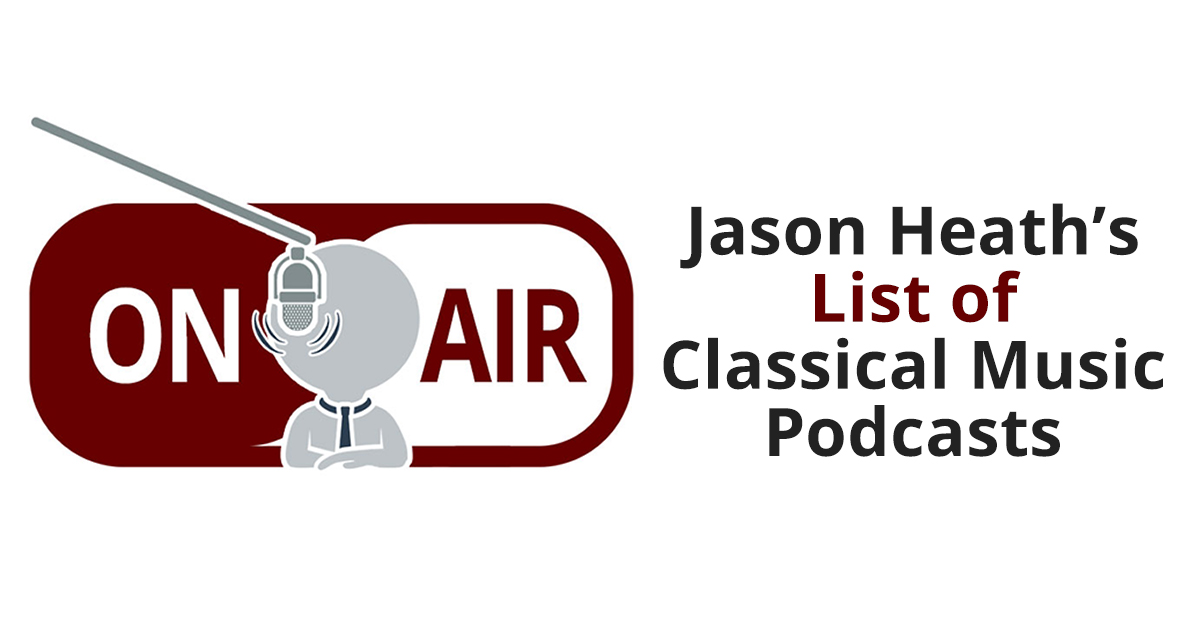Author’s note: Over the next five days, I’ll be in Seattle and then LA and during that time I’m very pleased to say that Henry Peyrebrune, Cleveland Orchestra bassist, will be filling in as a guest author. Henry has prepared a three part series of articles examining a topic that is getting a great deal of attention recently: community outreach ~ Drew McManus…
 I want to thank Drew for turning over his blog to me for a few days to share some ideas I’ve had about orchestras and our future. I’ll talk about redefining community service, old and new models and some practical steps for the future.
I want to thank Drew for turning over his blog to me for a few days to share some ideas I’ve had about orchestras and our future. I’ll talk about redefining community service, old and new models and some practical steps for the future.
Community service has been the orchestral buzzword for the past decade as orchestras have grappled with competition from new media and other art forms, and the loss of our privileged position in the minds of the media, academia, philanthropy and business. We ask ourselves whether we can educate enough people so that they’ll support us in the fixture. Have we isolated ourselves via the traditional concert experience? Will performing in nightclubs or grocery stores reach new audiences? How can we reach the underprivileged youth of our cities in order to share our music with them and try to somehow replace the loss of the substantive public school music education most of us had?
While these ideas intrigue us and excite some of our major funders, we question whether this will harm our responsibility to the art form. We’ve spent decades trying to build longer subscription seasons with thoughtful, challenging programming, sufficient rehearsal time, good conductors and an ever-rising level of playing. The level of playing and access to strong performances of the full repertoire is better that it has ever been. Will a new emphasis on community service harm the artistic quality we’ve worked so hard to develop? Did I practice and sacrifice so much just to end up in a string quintet hacking through March of the Toreadors in a shopping mall somewhere?
These are all good questions, but they’re the wrong ones.
I’d like to propose 3 simple questions to replace them:
- Who are our audiences? (emphatically plural)
- How can we touch individual members of our audiences?
- What do we do to build on that relationship?
A few brief answers:
Let’s recognize that we have different audiences. For my orchestra, the people who come to Severance Hall for Bruckner are not the people who come to Severance Hall for Lord of the Rings Symphony and the people who sit on the lawn at Blossom for Schubert Unfinished Symphony are yet another audience, as are the students at a high school run-out concert. That’s ok. It’s good, in fact. Having multiple audiences means reaching more people.
All of us who love music remember certain performances that touched us deeply, that made us say, “Wow, I never realized music could do that to me.” Boom! We were hooked. It’s why we care today, why we practice, why we work in orchestra management. It’s what makes us angry when we’re playing a needlessly mediocre concert, because we know what it could be.
Every audience, every concert deserve a fully committed, emotionally engaged, well-prepared performance that gives each person the chance to experience that Wow!moment. It means having a conductor who can lift the orchestra to its musical and technical limit; it means programming and pricing for that particular audience; it means full out hard work and attention to detail for every aspect of producing and playing that concert. Quality is not the enemy of community service; it is the service.
I tell my students that music is a great way to communicate human emotion. If you’re feeling angry or insecure, music is a great way to share that with your listeners. It’s also an incredible way to communicate an aching love for beauty, to share that desire for something beyond us. At its best, music reaches from one heart to another, or even to many.
Once we’ve touched someone like that, they want to get to know us. They want to spend time with us, to feel a sense of pride and ownership.In Cleveland, Apollo’s Fire and CityMusic do a great job of inspiring and building this relationship. Their audiences love to hear AF music director Jeanette Sorrell greet them and share her ideas about the pieces. CityMusic serves cookies at intermission so the musicians and audience can mingle and both orchestras play in venues that have the musicians and audience in close proximity. People feel an emotional connection with the music and the performers.
As symphony orchestras, we probably have this kind of relationship with our hard-core subscribers and major donors. At least, they feel enough of a connection that we continue to get their support. I’m not sure we show the same respect to the majority of our audience, though. And, I’m certain we miss countless opportunities to develop new relationships and broaden our support throughout the community. A former Philadelphia Orchestra and NY Philharmonic subscriber described her experience in a letter to music critic Jay Nordlinger:
It’s just no fun going to the orchestra anymore. We are barred from going backstage, so we don’t get to meet our orchestra members. The concert is over at 10 p.m. sharp. The musicians get up and leave even if the audience is still applauding, and there are neverencores. Sometimes we recognize orchestra players in their cars driving away as we cross the street to our parking garage. Their seats onstage are still warm! My husband and I suspect this is because the orchestra demands overtime if they go past 10 p.m. No more schmoozing with the folks! We also suspect that union rules have turned music performance into an impersonal job.
We have no bond with the orchestra anymore…
As I read this, I’m reminded of a spectacular demonstration of a thoughtless approach to community outreach. An orchestra was playing a concert on the local Indian reservation – their standard run-out program which required no rehearsal. Too bad it opened with the Light Cavalry Overture!
Every time we play educational concerts and talk down to the students, chat with our colleagues between pieces (while the third-string conductor is busy talking down to the audience) and make no personal contact with the kids, we are missing an opportunity to make future music-lovers.
Let me close by making clear two things I’m not saying:
I’m not saying that these examples are typical of American orchestras, but they are representative of the dangers of operating on auto-pilot.
I’m not saying orchestras don’t need to change.
I am saying that three questions should guide our decisions about change:
Who are our audiences? How do we touch each audience through music? What do we do to build on that relationship?
Let me know what you think about these ideas. Tomorrow we’ll talk about old models and new models.



Thanks Henry, for this wonderfully perceptive post! Your three questions are spot on point.
Looking forward to tomorrow’s contribution.
Awesome post Henry, I especially like the phrase “Quality is not the enemy of community service; it is the service.” Likewise, community service can’t be the enemy of quality.
Your post reminds me of a powerful moment in my life about ten years ago as a parent. My twin girls were about 7, my son was 4 and I took them to hear a “family concert” by a major symphony (won’t name names, won’t matter). It wasn’t a huge amount of money to do so, maybe $10 a ticket but I was recently divorced and it was nevertheless an investment. More to the point was the time investment, to get three kids moving and out the door for a 10:30 a.m. performance. The kids were not against the trip, but it took commitment to disrupt the typical Saturday routine for this outing. Nevertheless I was happy to do it as my kids would get to share in my love of orchestral music with one of the world’s great orchestras.
We got to the hall; sat up close on the main floor so that my kids could get the full visceral experience; I sat back for 90-minutes of bliss before packing up for the trip back home; the concert starts and a bunch of very bored musicians “phoned in” a really boring concert.
Now I couldn’t entirely blame the musicians. The conductor wasn’t the music director, but to their credit the principals for the most part were present. I’d played more than a few children’s concerts as a musician myself (albeit for much lesser ensembles) and knew the drill. For me, these were always under-rehearsed events that paid a few bills and kept the ensemble going to do “real” music. I could test a new reed and my string colleagues wouldn’t even bring their good instruments. For my kids it was fine. They really didn’t know how bad the concert was; certainly I told them it was great. They enjoyed it, but it was just a plain vanilla experience all around. I however was silently disappointed and I never took my kids to a kiddie concert again, by this orchestra or any other. I took them to lots of concerts, including local free events and (later) even subscription concerts by that same pro orchestra, but I haven’t forgotten that initial lame experience and it colors my feelings about this ensemble to this day, justly or not.
You’re absolutely right that the ultimate opportunity here is great music making and that is precisely what hooked us / called us to the service of the art. In all the arguments about sustainability and economic impact, the impact of the art as a truly human and spiritual experience must be in the foreground.
Yet it is these concerts on the margins of an ensemble’s geographic coverage and day-to-day routine that are most likely to capture someone new to our audience. Conversely, they are the concerts most likely to be an artistic disappointment.
One of the problems with English is that we can’t really tell if the word “audience” is singular or plural; does it refer to a community of listeners, the attendees at a particular event, or a huge number of INDIVIDUALS who each have their own particular mix of interests and reasons for attending? Are we playing a family concert for the kids or for the adult orchestral devotee who brought them? Unless we find out who our audience is and can be, recognize its diversity, identify the paths of connection and go above and beyond the routine, we can’t value each and every person who comes to our events and maximize the chance of transforming them with music. Maybe this wasn’t so important in the 1960s and 70s, but it would have been important to me ten years ago.
The real beneficiary of community service is, of course, the ensemble itself and making art without the best possibility to transform damages not only the ensemble and the listener’s potential relationship to music, but music itself.
Thanks for sharing your story, Mark. I completely identify with the struggle to get kids out the door to try something new. It takes a fair amount of planning and effort on the parent’s part.
We hear a lot from orchestras about reaching children and offering “access” to classical music. Kids today are REALLY busy and there’s tons of competition for their time. If we want to reach them, we need to offer an absolutely outstanding educational experience (that’s not completely passive) and we need to recognize that the decision-makers are their parents and the PTO.
I know that my kids don’t have time to take advantage of the arts education opportunities available to them; they have to choose among Suzuki, art classes, choirs and sports. Some children may lack opportunity due to poverty or single working parents or parents with no interest in the arts, but for most middle-class kids there is no shortage of activities to fill up the afternoons and weekends.
Henry, I couldn’t agree more. The same concept of connecting with your audience both on and off the stage has been becoming more and more important in the pop music scene as well. What you’re saying not only applies to orchestras but nearly all performers. Thank you for writing this article. It gives me reason to be proud to be a B-W Conservatory alumnus.
Thanks Henry for a thoughtful and intelligent look at an issue that attracts lots of heat and very little light these days…. I often describe the problem as needing to bring the non-performance aspects of going to hear music up to the level of the performance aspects. All too often “outreach” and “community service” means very good performances surrounded by poor organization, poor understanding of who your audience is, poor marketing, and poor efforts to build a relationship and true understanding with that audience.